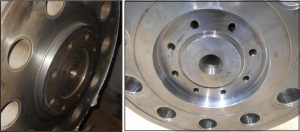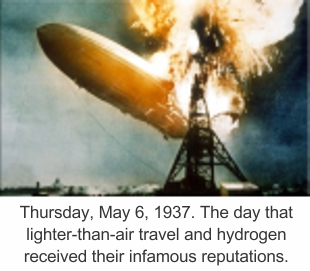How 0.002” Can Ruin a Turbine
 Steam turbines can reliably run for 30, 40 years or more. However everything wears and eventually fits, finishes and tolerances become unacceptable. For instance, the rabbet fit on the coupling faces of a three bearing machine will eventually become loose and in need of repair. This defect can cause misalignment, abnormal vibration levels and undue stresses on the rotors.
Steam turbines can reliably run for 30, 40 years or more. However everything wears and eventually fits, finishes and tolerances become unacceptable. For instance, the rabbet fit on the coupling faces of a three bearing machine will eventually become loose and in need of repair. This defect can cause misalignment, abnormal vibration levels and undue stresses on the rotors.
On a three bearing machine the contact area of the coupling faces is also referred to as the friction face. This is where the torque of the coupling bolts exerts the necessary clamping pressure to hold the coupling halves together without any movement. The normal criteria are 0.000″ to 0.001″ interference for the rabbet male to female fit. Clearance is not permitted. Once this fit becomes too loose then any kind of abnormal event, like a full load trip or synchronization of the generator out of phase could cause a small shift of position at the coupling due to the shaft torque. Since the alignment specification is one half of a mil per foot of shaft from the center of the coupling, any movement at the coupling halves can translate into a misalignment problem.
There are basically three components that need to be maintained in good condition: First is the interference fit of the male to female rabbet. We have already described the importance of this. Next is the condition of the friction faces of the coupling. The faces should maintain a surface finish of 63. They should be hand cleaned only and should never be stoned. Last but not least is the integrity of the coupling bolts.The coupling bolts can fatigue and yield over time from being loosened and re-torqued repeatedly. One should check for galls and burrs which might be evident under the bolt heads or on the flat surfaces of the nuts. The coupling bolts should be inspected nondestructively for cracks during every major inspection. All three items are simply mechanical devices which can be overlooked or assumed to be acceptable for continued service. In reality they can cause misalignment, abnormal vibration levels and undue stresses on the rotors.
Although four bearing machines do not have this particular problem, any deviation from any specification can potentially cause problems either immediately or down the road.

 A generator is a device that converts mechanical energy into electrical energy. According to the concept of energy conservation, all mechanical energy that is introduced into the generator is converted into useful energy (electricity) or useless energy (primarily heat). The efficiency of a generator is based upon the ratio of useful to useless energy. As generators have grown in size and capacity through the years so has the need to improve efficiency through minimizing heat.
A generator is a device that converts mechanical energy into electrical energy. According to the concept of energy conservation, all mechanical energy that is introduced into the generator is converted into useful energy (electricity) or useless energy (primarily heat). The efficiency of a generator is based upon the ratio of useful to useless energy. As generators have grown in size and capacity through the years so has the need to improve efficiency through minimizing heat.